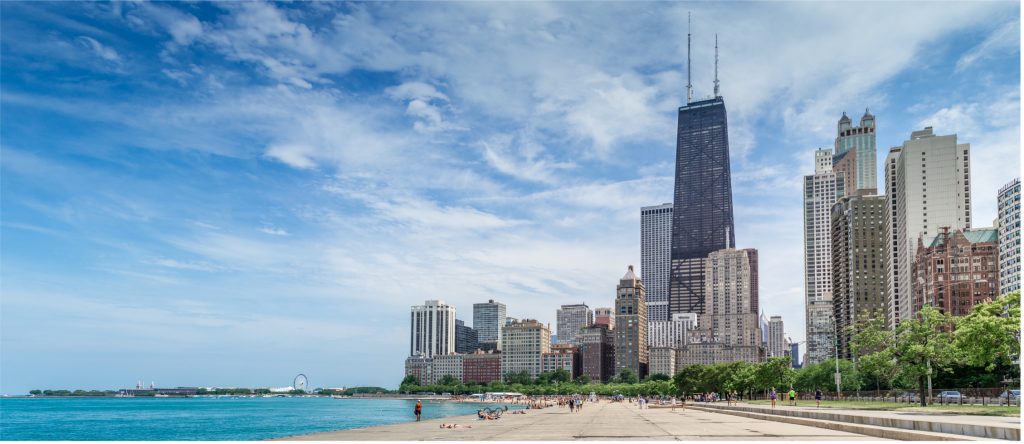Today, Chicago is often cited as having had one of the most successful urban development plans in United States history. During a period of great transition in the United States, Daniel Burnham, a well-regarded architect, and urban planner, developed an urban development plan for the city of Chicago that would help combat the cities growing problems caused by industrialization. As a result, the city of Chicago experienced a period of unprecedented advancement, largely thanks to Burnham’s designs.
As someone with over 20 years in the real estate development industry, Armand Candea, co-founder and CEO of Candea Development, recognizes Daniel Burnham’s significant influence on modern Chicago and the impact Burnham’s Urban Plan continues to have on Chicago’s development today. While the majority of professionals in the architecture and real estate industries will likely already have learned of the 1906 Urban Plan of Chicago, Armand Candea of Candea Development hopes to provide an overview of the plan for those unaware of this historical urban plan.
City Beautiful Movement
Throughout the 1800s, Chicago underwent a period of industrialization. As a result, Chicago quickly faced a serious overcrowding and pollution problem that led to the city becoming overridden with trash and clutter. During the late 1800s, there was pressure on the Chicago government to clean up the city, reduce pollution and congestion, and make the city once again livable. During the World’s Columbia Exposition of 1863, the first large-scale model of the City Beautiful Movement in Chicago was displayed. The model was created by Daniel Burnham and became known as “White City” as the model prominently featured white buildings, as was the custom for the time. The White City model was well-received by exposition visitors and became the spark that led to Chicago’s 1906 Urban Plan.
Armand Candea states that during the late 1880s and early 1890s, the City Beautiful Movement was sweeping through the architectural community, where the topic of Beaux-Arts principals became highly popular. The Beaux-Arts principals believed that the beautification of a city would help rid that society of its “social ills” and help urban communities thrive both intellectually and economically. The movement would go on to inspire civic loyalty and renounce the poverty-stricken lifestyle of the majority of American urban cities during this time period. The City Beautiful Movement adopted many Architectural elements from European cities, such as neoclassical elements and Baroque styles.
While the City Beautiful Movement would have a great impact on Burnham’s plan for the city of Chicago, the movement failed to address a number of real social issues such as poverty, immigration, over-crowing, and limited housing. Shortly after Burnham’s plan was finished in 1909, the City Beautiful Movement went out of fashion, confining its influence on the architectural community from 1897 to 1902; however, some historians believe the movement actually ended in 1915.
As previously stated, Burnham’s plan for Chicago, often referred to as the “Burnham Plan” or “The Plan of Chicago,” was not finalized until 1909; however, the project began in 1906 with help from The Commercial Club of Chicago. One of the first aspects of the plan was to help develop the city to help meet the demands of the booming railroad and transportation industry in the city. Burnham and the Commercial Club of Chicago took significant influence from the recent city designs for Paris, which developed the plans around a city focal point and used large streets and boulevards emerging from the city’s center. Burnham would base his plan off of Paris’s city designs, take the city center concept, and use streets, foundations, and architectural designs similar to those in Paris. Daniel Burnham hoped that Chicago would become not only a city tailored for transportation and automobile owners but pedestrians as well. Some of the elements Burnham pushed for in his Plan for Chicago that would help make this ideal a reality were:
 Improving Lakefront: Today, the Chicago lakefront is one of the city’s defining characteristics and a major tourist attraction for the Windy City. Chicago’s established lakefront can be credited to Daniel Burnham, who designed today’s lakefront to be better accessible to Chicagoans. Burnham’s various design elects aided commerce, trade, and interest in the city during the 20th century by building parks along the lakefront and expanding harbor facilities near Lake Superior.
Improving Lakefront: Today, the Chicago lakefront is one of the city’s defining characteristics and a major tourist attraction for the Windy City. Chicago’s established lakefront can be credited to Daniel Burnham, who designed today’s lakefront to be better accessible to Chicagoans. Burnham’s various design elects aided commerce, trade, and interest in the city during the 20th century by building parks along the lakefront and expanding harbor facilities near Lake Superior.
Regional Highway: During the age of the automobile, Burnham recognized the importance of a highway system that would connect Chicago to the surrounding nodes and states. By executing this highway system, Burnham helped decongest the city and allow residents to live in the city’s outer regions while still easily accessing Chicago’s center city.
Systematic streets: Burnham’s recognized that incorporating wider streets between the civic centers and surrounding residential areas would not only help decongest housing in Chicago but help relieve traffic as more and more Americans were purchasing automobiles during the 1920s.
Improving Railways: Throughout the 1800s, Chicago’s economy flourished thanks to the creation of the railway system in the early 1850s. The city served as a vital distribution center and gateway between the Midwest and the rest of the country, helping to transport the plentiful grain and livestock from the surrounding Midwest states. Burnham’s Plan for Chicago would significantly improve Chicago’s railways and transportation in and out of the city. The expansion of the railway would eventually lead to the growth of Chicago’s business district.








